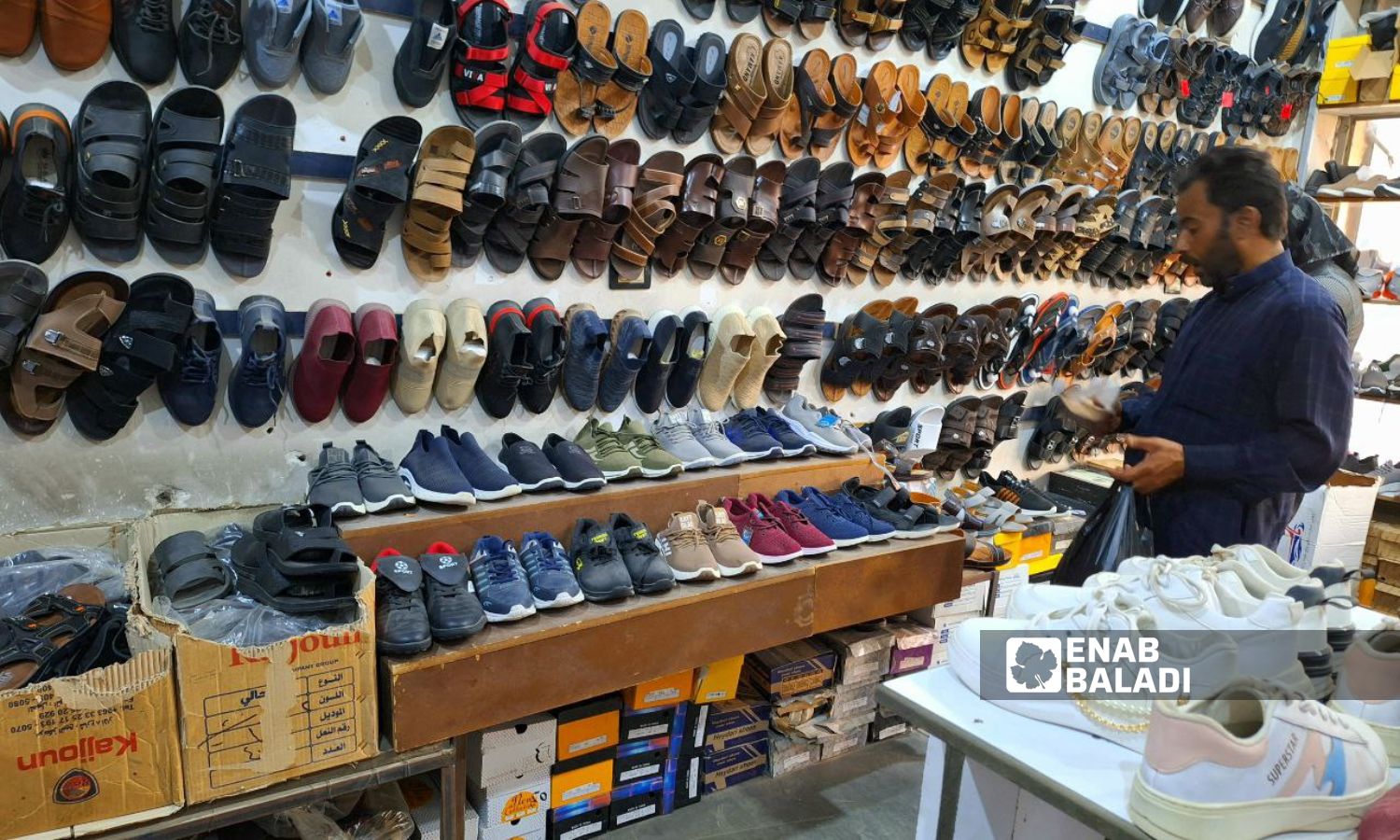



Deir Ezzor – Obadah al-Sheikh
Despite the demand for the “klash” or “sharoukh” as it is locally known, this shoe associated with the region’s fashion culture has disappeared from shoe stores in rural Deir Ezzor due to the high cost of crossings and extortion fees imposed by military checkpoints in the areas under regime forces control, which in turn increases its manufacturing cost.
Despite advances in shoemaking and the influx of various new imported goods, such as Iranian and Chinese products, the traditional klash sandals still hold significance among the elderly in Deir Ezzor and its countryside.
Ahmed al-Jaffal, 55, from the town of Darnaj in eastern Deir Ezzor, told Enab Baladi that he has been buying klash sandals for decades at the beginning of summer, but this type of shoe has become rare in the region’s stores.
He added that the traditional shoe in Deir Ezzor was previously of high quality and maintained its shape over time, as it was made from cow or goat leather. However, today, if found, it is of poor quality.
Qasim al-Fahd, a shoe merchant in eastern rural Deir Ezzor, told Enab Baladi that the shoes known as klash sandals were always handmade from livestock leather, and a French-made sole, known for its durability, was added.
He added that the high production costs forced manufacturers to use lower quality materials than before; they now use locally manufactured ready-made soles, in addition to straps made from poor-quality synthetic leather, which do not withstand repeated use.
Despite its declining quality, the price of klash sandals remains high, ranging today between 90,000 and 125,000 Syrian pounds.
If shoes made from natural leather are available, their price may reach up to 300,000 Syrian pounds.
Samer al-Zagheer, the owner of a shoe store in the city of al-Basira in eastern Deir Ezzor, told Enab Baladi that the Klash is available in some stores, but the high transportation costs from regime-controlled areas to those controlled by the Autonomous Administration of North and East Syria (AANES) have reduced its availability among some sellers.
He added that purchasing 100 pairs from one of the workshops in the al-Qusur or al-Joura neighborhoods in the regime-controlled part of Deir Ezzor could cost him more than 100 US dollars between checkpoint extortion fees and transportation costs between controlled areas, which increases its price for customers.
Al-Zagheer also said that the demand for the klash sandals is concentrated in the summer season, with most of his customers being elderly men in the area, who consider this type of shoe a complement to the traditional summer attire known as “Galabiya.”
According to the merchants who spoke to Enab Baladi, young men and teenagers prefer Chinese and Iranian shoes with new designs, which are priced between 30,000 and 150,000 Syrian pounds, selling about 50 to 100 pairs a week.
Buying klash sandals is limited to men and the elderly in the region.
According to an article published by the local website “Here is Deir Ezzor,” the klash sandals entered the governorate through Mr. Abdullah al-Saqabi decades ago.
It was traditionally made from natural cow leather. The leather would be hung and spread until it dried, then yogurt and salt were applied to it, followed by refrigeration to prepare it for manufacturing.
According to the local website, the klash is glued using special adhesives and then sewn with threads made from animal intestines called “Sarideh,” with no metal parts used in its making.
is worn in the summer to protect the feet from hot roads and, along with the Galabiya, forms a traditional outfit for the locals of the city and countryside.
It has become a “heritage symbol,” according to the local website, and has gained fame in other Syrian governorates over time, being used by both males and females.
Common names for it include “Abu Isba,” “al-Hajani,” “al-Hijazi,” and “al-Majdoul.”
if you think the article contain wrong information or you have additional details Send Correction